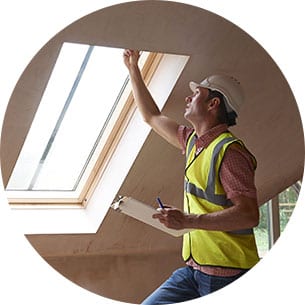Are you in the process of buying a new home? A home inspection is a crucial step in the home-buying process. It can help you identify any potential problems with the property before you make your purchase. However, not all home inspections are created equal. In this article, we will discuss the top 10 red flags to look for during a home inspection.
What is a home inspection?
A home inspection is a thorough examination of a property’s physical condition, which includes the evaluation of the property’s major systems, such as the electrical, plumbing, and heating systems. The inspection is conducted by a professional home inspector who is trained to identify any potential problems with the property.
Importance of a home inspection
A home inspection is an essential step in the home-buying process. It helps buyers to identify any potential problems with the property before making a purchase. This can help buyers negotiate a better price or avoid a property with major issues altogether.
The role of a home inspector
A home inspector is a trained professional who conducts a thorough inspection of a property’s physical condition. Their role is to identify any potential problems with the property and report them to the buyer. A home inspector is not responsible for fixing any problems they identify.
Top 10 red flags to look for during a home inspection
1. Roofing Issues
The condition of the roof is an essential factor to consider during a home inspection. Look for signs of wear and tear, missing shingles, or any other damage that may need to be repaired or replaced.
2. Electrical Problems
Electrical problems can be dangerous and costly to repair. During a home inspection, look for outdated wiring, overloaded circuits, or any other potential electrical issues.
3. Plumbing Problems
Plumbing problems can cause water damage and be costly to repair. During a home inspection, look for leaks, low water pressure, or any other potential plumbing issues.
4. Poor Drainage
Poor drainage can cause water damage and other issues. During a home inspection, look for signs of poor drainage, such as water stains on the walls or floors.
5. Foundation Cracks
Foundation cracks can be a sign of serious structural issues. During a home inspection, look for any cracks in the foundation or walls.
6. Water Damage
Water damage can be a sign of a leak or other issues. During a home inspection, look for signs of water damage, such as stains or discoloration on the walls or ceilings.
7. HVAC Issues
HVAC issues can be costly to repair and impact the comfort of your home. During a home inspection, look for signs of outdated or damaged HVAC systems.
8. Pest Infestations
Pest infestations can cause damage to the property and be a health hazard. During a home inspection, look for signs of pest infestations, such as droppings, nests, or damages to the structure.
9. Structural Damage
Structural damage can be costly and dangerous. During a home inspection, look for signs of cracks, sagging floors, or any other signs of structural damage.
10. Insufficient Insulation
Insufficient insulation can lead to higher energy bills and discomfort in the home. During a home inspection, check the quality and amount of insulation in the attic, walls, and floors.
What happens if you find a red flag?
If the home inspector finds a red flag during the inspection, you should discuss it with your real estate agent and the seller. Depending on the severity of the issue, you may need to negotiate a lower price, ask for repairs, or walk away from the deal.
How to avoid red flags during a home inspection
To avoid red flags during a home inspection, make sure to conduct research on the property and the neighborhood beforehand. Also, make sure to choose a qualified and experienced home inspector who will conduct a thorough inspection.
The cost of a home inspection
The cost of a home inspection can vary depending on the size and location of the property, as well as the experience and qualifications of the home inspector. On average, a home inspection can cost anywhere from $495.
How to choose a home inspector
When choosing a home inspector, make sure to ask for referrals from friends and family or check online reviews. Also, make sure to ask for their qualifications and experience in the industry.
Common mistakes to avoid during a home inspection
Common mistakes to avoid during a home inspection include not attending the inspection, not asking questions, or not reviewing the inspection report thoroughly.
FAQs
What should I bring to a home inspection?
It is recommended to bring a notepad, pen, and camera to take notes and pictures of any potential issues.
How long does a home inspection take?
The duration of a home inspection can vary depending on the size and condition of the property. On average, a home inspection can take anywhere from 2 to 4 hours.
Can I attend the home inspection?
Yes, it is highly recommended to attend the home inspection to ask questions and get a better understanding of the property’s condition.
Can a home inspection be waived?
While a home inspection is not required, it is highly recommended to avoid potential problems down the line.
Who pays for the home inspection?
The buyer typically pays for the home inspection. However, the cost can sometimes be negotiated between the buyer and seller.
Conclusion
In conclusion, a home inspection is an essential step in the home-buying process. By knowing what red flags to look for during a home inspection, buyers can make informed decisions and avoid unexpected expenses and safety hazards. Remember to choose a qualified and experienced home inspector, attend the inspection, ask questions, and review the inspection report thoroughly. By doing so, you can ensure that you’re making a smart investment in your future home.




